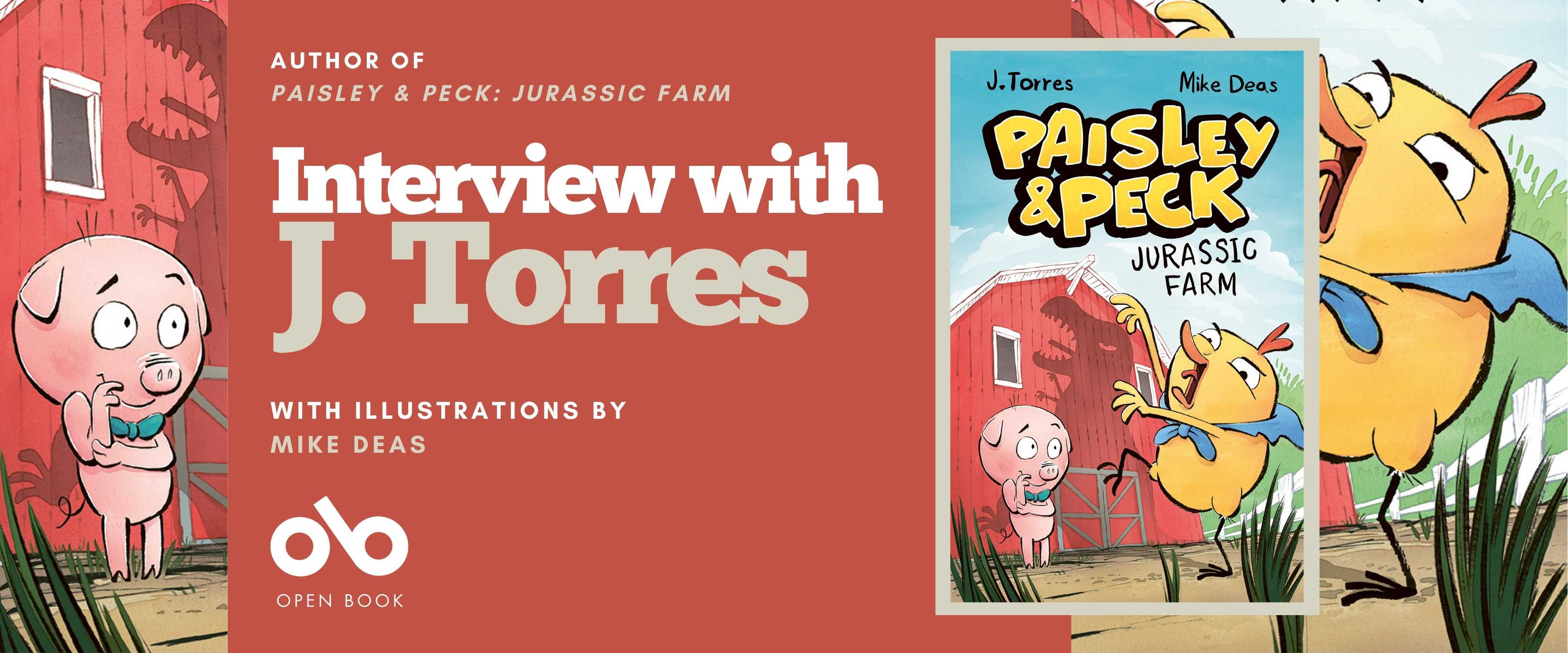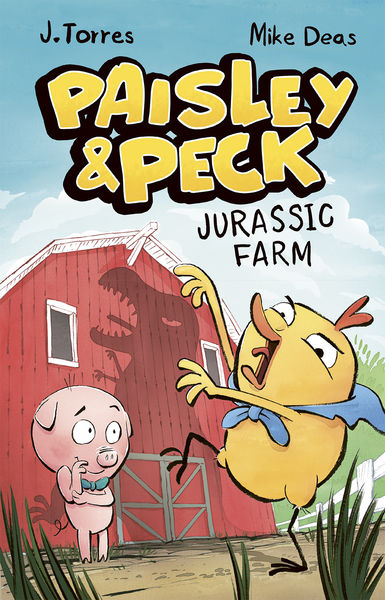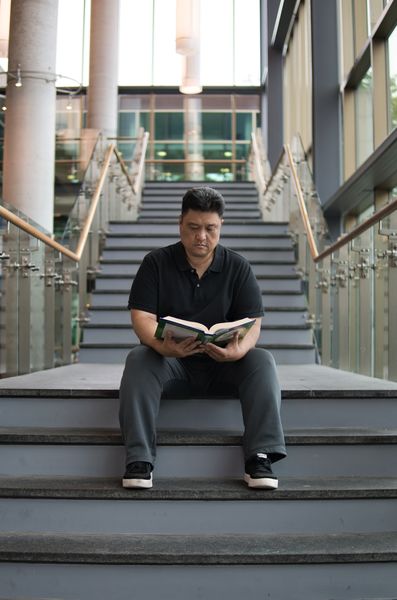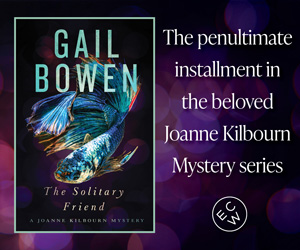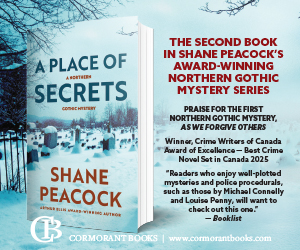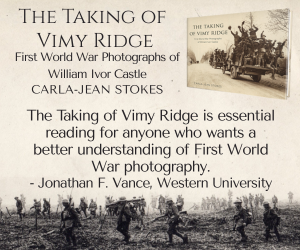Take a Visit to the Riotous, Colourful World of PAISLEY & PECK, JURASSIC FARM
In Paisley & Peck: Jurassic Farm (Owlkids), the barnyard becomes a stage for laughter, friendship, and a touch of prehistoric chaos. This lively first installment in the new graphic novel series by J. Torres follows two unlikely best friends—a fussy, food-loving pig named Paisley and a free-spirited chick named Peck—who are figuring out who they want to be. While Paisley dreams of becoming a food critic rather than eating farm slop, Peck sets his sights on a much bigger transformation after discovering that chickens evolved from dinosaurs.
When Peck’s imagination runs wild and he decides to embrace his inner “Ty-rooster-saurus rex,” things on the farm spiral into hilarious mayhem. Beneath the comedy and colourful action, with vibrant illustrations by Mike Deas, Jurassic Farm celebrates individuality, self-discovery, and the messy joy of growing up. It’s a bright, funny, and heartfelt start to a series that shows that sometimes the best way to find yourself is to break a few barnyard rules along the way.
We've gpt an excellent Kid's Club BFYP interview with the author to share with out readers, and you can check it out below!
Open Book:
Tell us about your new book and how it came to be.
J. Torres:
Paisley & Peck is the story of two barnyard besties who stand out from the other animals on the farm because they’re not your typical pig and rooster. Paisley is neat and tidy and refuses to eat slop. He dreams of dining in fancy restaurants and eating gourmet food, and he even wants to grow up to be a food critic. Peck is not a “morning person” and does not want to grow up to be the farm’s alarm clock.
In the first volume of the series, Jurassic Farm, Peck discovers that chickens evolved from dinosaurs, so he decides that he wants to follow in his ancestors’ footsteps and stomp around the farm like a T. rex—to everyone else’s chagrin. This odd couple was in part inspired by my kids, as well as myself as a child, and I think a lot of younger readers will be able to relate to the feelings, experiences, and aspirations of Paisley and Peck.
OB:
Is there a message you hope kids might take away from reading your book?
JT:
I just want them to read Paisley & Peck, enjoy it, and want to read even more books, especially graphic novels, because I’m a big fan of comic books and think everyone should read more comics. But if readers also learn a thing or two from the story (for example, that chickens evolved from dinosaurs), or pick up on the themes of being true to yourself and dreaming big, and somehow take that to heart, then even better.
It’s also the best when a kid comes up to me after having read one of my books and tells me they were inspired to write and/or draw their own story. However, the first goal—my main goal as a writer—is simply to get kids reading.
Your CanLit News
Subscribe to Open Book’s newsletter to get local book events, literary content, writing tips, and more in your inbox
OB:
Is there a character in your book that you relate to? If so, in what ways are you similar to your character and in what ways are you different?
JT:
I definitely relate to Paisley the most. He and I both love to eat, but while I like to eat out or order in (probably too much), he can only dream of that for now. However, we both want to grow up to be food critics or judges on one of those cooking competitions on TV, or otherwise get a job that involves eating. So, if anyone from Food Network is reading this...
OB:
What do you need in order to write—in terms of space, food, rituals, writing instruments?
JT:
I usually start my morning by making a coffee and some toast with peanut butter before I sit down to work. Then I set my “breakfast” down on my desk while I check my e-mail. It’s a good morning if I can drink my coffee while it’s still warm and get a handful of pages written before lunch.
But sometimes I get distracted or delayed and the coffee gets cold before I can get any writing done. There are also times when my coffee gets cold and I haven’t taken one bite of toast because I was in “the zone” and couldn’t stop writing. On those days, I’ll move from my office and desktop computer to keep working on my laptop at the kitchen table while eating lunch—which is sometimes cold coffee and toast. It’s a glamorous life.
OB:
How do you cope with setbacks or tough points during the writing process? Do you have any strategies that are your go-to responses to difficult points in the process?
JT:
Whether the ideas just aren’t flowing or I’m not happy with what I’m actually coming up with, I find it’s best to just push away from the desk and do something else. Sometimes I’ll organize my office or take the dog to the park, but often I’ll turn to other people’s creativity to get my creative juices flowing again.
I’ll listen to some music, watch a movie, or read something. You’d think that if I’m working on something like Paisley & Peck, then something in a similar vein—like Looney Tunes cartoons or funny animal comics—should do it, but it’s almost always something totally random and unrelated that works, like episodes of The Bear or creating a playlist of ’80s hip-hop on Spotify. I think it’s just about clearing my mind with other creatives’ creations that put me in the right headspace to get back to creating myself.
OB:
What’s your favourite part of the life cycle of a book—the inspiration, writing the first draft, revision, the editorial relationship, promotion and discussing the book, or something else altogether? What’s the toughest part?
JT:
My favourite part of writing graphic novels is seeing the artwork come in—seeing what I wrote come to life, so to speak. Comics are all about the marriage of words and pictures, and it’s exciting to see what I scripted come together with the art. Opening my inbox in the morning and seeing new artwork from Mike Deas has been like Christmas to me.
The toughest part has to be the wait for the book to be released and to get some (hopefully positive) feedback on all the work we did. The first part of the cycle is pretty solitary, just me and my computer, so I love the collaborative process when I get to interact with an artist or editor. But it all culminates in the book finally getting into readers’ hands, which is the part that most excites me. Since it takes roughly two to three years from the time I turn in a script to the book being in stores and libraries, it can be a long, tough, sometimes agonizing wait.
OB:
What are you working on now?
JT:
I just finished proofreading the text for Paisley & Peck: Pizza Barn, which is the second volume of the series. I believe all that’s left is for editorial to do their final art checks, then it’s in the can. Then it’s that agonizing wait I mentioned earlier until the book is released. Meanwhile, I’ll be working on the final draft of the script for volume three!
_____________________________________
J. Torres is a Filipino-born Canadian comic book writer. He is best known for his run on DC Comics' Teen Titans Go! as well as his two Forest of Reading honour books, the graphic novels Planet Hockey and Stealing Home. He is also the writer of the Chirp comic in Chirp Magazine and the Chirp picture book series. He lives with his family in Toronto, Ontario.
Mike Deas is an author and illustrator of many picture books and graphic novels, including the Bee & Flea series and the Sueno Bay Adventures. He lives with his family on sunny Salt Spring Island, British Columbia.
